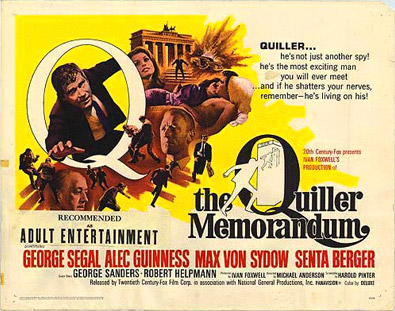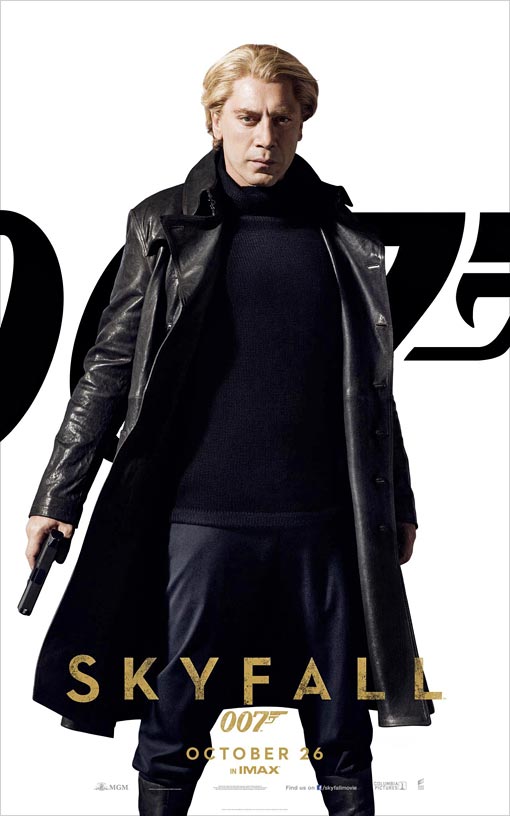In his new book entitled Bond On Bond, Sir Roger Moore says that not only is Daniel Craig the best actor to play the world’s greatest fictional spy but that he also has the best build of any Bond to boot. Is he right? Is he wrong? Does it matter? Do we care? We are talking about an actor and an imaginary character after all and the nights will continue to draw in and our taxes won’t change depending on our verdict.
Of course, there is no real answer to the question because, like a ‘best’ meal or a ‘best’ holiday destination, everyone has a favourite based on their own individual tastes. One person’s Lobster Thermidore will be another’s cheeseburger and curly fries. Paradise for some would be relaxing on an island in the Indian Ocean while for others it would be trekking across the American northwest. It’s all relative you see. Likewise, can it truly be said that John Wayne’s portrayal of Rooster Cogburn in True Grit was better than that of Richard Burton’s King Henry VIII in Anne of the Thousand Days? Wayne did win the Academy Award that year, after all. Or was it simply two great artists doing what they do extremely well but being pointlessly compared to one another in a competition where only one can triumph?
Surely then, this is the same pointless comparison for the six actors who have so far played Bond. Each one different, each one bringing something new to the role, each one interpreting the role in their own way from their own prospective. While it’s true that some of the films are better than others, generally a result of a more rounded script, can the better films be accredited solely to the actor in the lead role? Probably not. On Her Majesty’s Secret Service is one of the strongest stories in Fleming’s series of novels but was made with a relatively inexperienced actor in the lead role and a fast-paced editing style, making for a slightly wooden Bond and a different looking movie overall. But in spite of this, with a script that leaned more towards plot than full on action while keeping remarkably true to the original story, it remains one of the more intelligent films in the franchise and a firm favourite with fans.
For me, Connery defined the role. He was tall, dark and brutally handsome. His Bond oozed masculinity, had an intrepid sense of fun and an over-stimulated libido, things that quickly became trademarks of the character. Under Cambridge alumnus Terence Young’s direction, Connery was able to portray a man who had had a university education at, among others, Eton (albeit cut short by unruly behaviour) as well as having enjoyed European adventures during his formative years. Connery’s Bond was well educated, had a certain continental exuberance and a graceful British refinement. His wardrobe was simple yet stylish, tailored perfectly to his athletic physique with an elegance no subsequent Bond has managed yet. Certainly Brosnan and Craig are well-decked out in their expensive tuxedos and assorted outfits but by comparison they are starched and look over-dressed. A case perhaps of the wardrobe department trying too hard.
There was a glamour that surrounded the character in those early ’60s films, something exotic that is no longer there. Remember, this was a time when a large majority of us had probably never been abroad (save for those servicemen and women who were stationed overseas during and after WWII) and so Jamaica, Turkey, etc would have been incredibly exciting locales to cinema-goers. Today, a much greater number of us have travelled abroad, experienced far-flung destinations like those places visited by 007 and consequently a part of the mystique of this man’s world has been removed. The same could be said of the exotic car associated with the character as well because the chances of seeing a DB5 (of which just over a thousand were built) around in the mid ’60s was much lower than catching sight of a Vanquish today. Indeed, I’ve no doubt a huge proportion of the younger (and not so younger) generation have probably even driven a Vanquish, if only via a PlayStation console. The mystery, the intrigue of the world that this most secret of men inhabits is all but gone.
The majority of us would likely admit to preferring the James Bond actor that we grew up watching. It’s that age when our minds are most fertile and impressionable and nostalgia often affects a strong influence too. Roger Moore was Bond when I grew up and as much as I enjoyed his 007 (The Spy Who Loved Me being my personal favourite of his) he never threatened to replace Connery’s face in my mind as I re-read Fleming’s novels. I loved Moore’s acting though, it was glib and humorous and highly entertaining (as it was in all he did save perhaps The Man Who Haunted Himself, which I recommend anyone to see) but his Bond didn’t seem as dangerous as Connery’s, or as real. And suddenly we get to the heart of the matter. Realism. Sure, the novels are fiction, we all know that, but they were written by a man who worked for British Naval Intelligence, a man who experienced the world of espionage and managed to translate that experience onto the pages of his novels via his writing style. And those first two movies, Dr No and From Russia With Love, were respectfully true to the writing, hence, they retained a certain realism. Particularly From Russia With Love, which involves a somewhat low key plot that concerns the acquisition of a decoding machine and the revenge assassination of Bond. Simple stuff by today’s standards but no less entertaining and thrilling for it. As for action, the fight between Bond and Grant in the train compartment is surely one of the best choreographed punch-ups in movie history. Connery and Shaw really do struggle with each other as they smash into the wooden doors and wardrobes. And they make it look so real. By contrast, today’s Bond seems to bulldoze his way over his enemies like a Terminator, showing no emotion and barely any effort as he leaves broken necks in his wake. The editing and pace of modern movies is such that a choreographed fight is less of a scene and more of a splicing together of lots of different moves.
Something else that came to define Bond’s screen character (if not his literary one) was the dry wit, the humour, the witty one-liners. Connery started it, Moore expanded it, Dalton removed it, Brosnan resurrected it and now, Craig has totally overlooked it. But wait a minute, isn’t this humour an integral part of 007’s screen persona? Take that away and you removed a part of the man. We have come to expect Bond to deliver some daft tongue-in-cheek remark after despatching a bad guy from a rooftop. However, let’s not assume that these witticisms are easy to deliver, for it takes a certain ability, a certain (dare I say it) X-factor that an actor either has or doesn’t have and some, perhaps even most, actors just don’t have it. Sometimes a joke can be seen a mile off and come across as simply too obvious, as it did on numerous occasions in the Brosnan films. Yes, they make you chuckle but they come across as having been carefully placed into proceedings by a scriptwriter rather than a flippant off-the-cuff remark by the character himself, something Connery and Moore did so well.
When Timothy Dalton took over the reins in 1987, he said he wanted to take 007 back to the books and the grittiness of Fleming’s writing. He did this and his portrayal was a great departure from Moore’s, which was perhaps no bad thing at the time, when the series was losing momentum but he took a step too far and made Bond dull, boring, sensible, unsexy. The story lines of his two films were not necessarily at fault but in his portrayal of Bond, he lacked that certain something that made him at once deadly and yet likeable and charming.
Like Dalton, Brosnan lacked that undefinable quality to be a great James Bond although he did at least bring the fun back to the series. But by this time the films were nothing more than globe-trotting blockbusters with little of the essence of the novels in evidence, save an Aston Martin and a dry Martini. The story lines were fantastic and the stunts totally unreal simply because the cinema-going public had grown used to all of Hollywood’s heroes escaping from enormous explosions with their shirt tails on fire while riding a high-powered motorcycle one handed through a plate glass window. Nowadays, the cinematic world is full of Jason Bournes and Frank Martins, riveting audiences to their seats with high octane action. So, is James Bond still unique among contemporary movie characters?
Casino Royale was a great film and according to polls, one of the most popular Bond films to date. Again though, do we credit the lead actor with this success or the screenplay, which was pretty darn close to the original story? Daniel Craig certainly redefined the role to fit him as an actor but if we are going to attempt a pointless comparison with the previous five actors, then I think it’s a little premature to label him the best Bond ever. For my money, he completely lacks the charm, the wit and the elegance of Fleming’s creation and as I said earlier, he tends to trample his enemies like a Terminator. He’s more of a well-dressed thug than a suave secret agent and despite his tuxedo, he exudes the qualities of a man who’d prefer a beer than a Martini. Yes, he may have set female pulses racing around the world with his emergence from the ocean in a scene precariously reminiscent of Hally Berry in her orange bikini from Die Another Day, but he’s made the character a lot less likeable and consequently, less fun to watch. The films themselves have become too big, too spectacular, too fantastic and because of this, the stunts and the story lines become ever more unbelievable. How wonderful it would be for the producers to return to Fleming’s roots and give us an intelligent espionage thriller once more instead of another saving-the-world mega blockbuster that is nothing more that a series of death-defying stunts strung together by an unbelievable story line.
So, is Sir Roger merely fanning the flames of the series after the relative disappointment of Quantum Of Solace or does he have a point? Is Daniel Craig a better actor than those who preceded him in the role and does he have the best build of any of them? Being the only one to come in under six feet, he’s certainly the shortest and stockiest but the best? Personally, I think Daniel Craig needs to lighten up a little and let us see that he’s enjoying the role of the world’s coolest secret agent before he gets anywhere near Connery’s portrayal. But that’s just my opinion. And we all have one.
Skyfall will doubtless make millions of dollars and ensure that Bond returns once more but at the end of day, the difference between today’s Bond films and the early ones will be explicated by the historians. Critics and fans alike already view Dr. No, From Russia With Love and Goldfinger as ‘classic’, genre-defining moments of cinema. The rest of the titles in the series, well, however much we love them, they are less likely to garner such acclaim and will probably be spoken about in the same way as the majority of rip-roaring blockbusters that Hollywood churns out.


